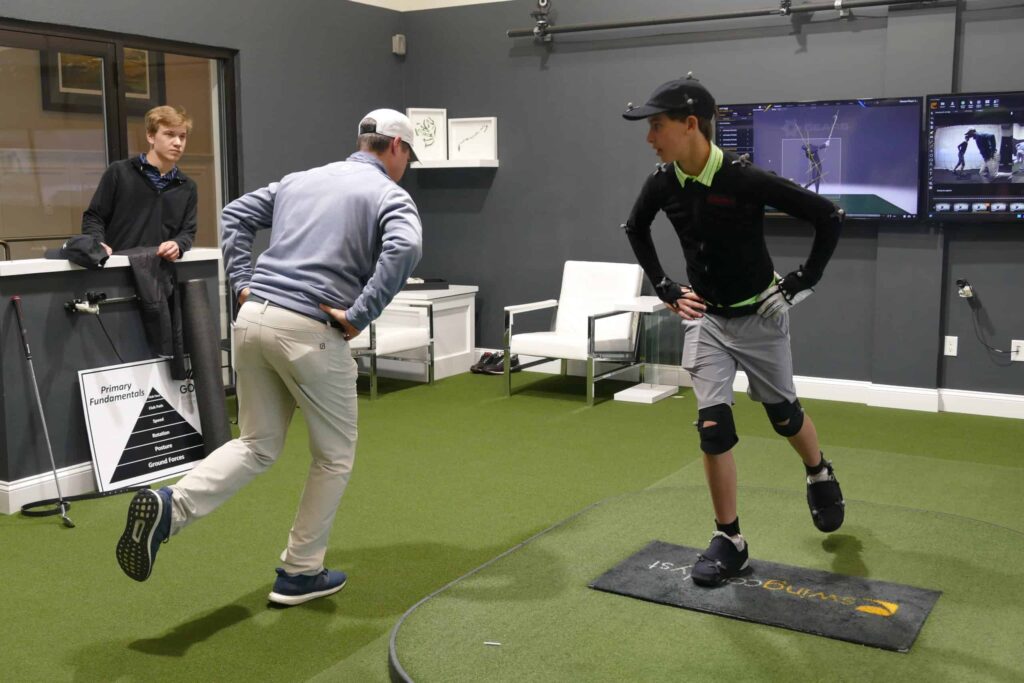Rotation – Quality Over Quantity
Now it’s time to talk about the third primary fundamental in golf and that is rotation. In the last two articles I addressed ground forces and posture and how those two influence movement and the ability to rotate in posture. Many people talk about how much players rotate back and through in the golf swing, but really it’s the quality of the rotation that dictates the efficiency of a golf swing.
Measuring countless golfers on GEARS and K-vest has allowed us to see how the quality of a player’s rotation can really determine the ability to control the golf ball. A very common form of poor rotation is sway of the pelvis in the backswing leading to reverse spine angle. This means that the pelvis moves laterally away from the target and the upper body leans towards the target at the top of the backswing. Why is this considered poor rotation? Because there is no leverage to move the arms and club down to the ball in the forward swing with speed and control. When the spine is leaning towards the target leverage is lost. There are other forms of poor rotation such as standing up in the backswing, having your lead hip fall too low in the backswing, or early extending through impact. Regardless of which flaw you find in your swing, power and control are being lost.
Having an evaluation in which you gain understanding as to the physical reasons for poor rotation is a critical step to making improvements. Then, along with corrective exercises, you can work through the appropriate drills to ingrain a new motor pattern in your golf swing. In time this will lead to more leverage and thus more speed and control, not to mention lower your risk of injury.


